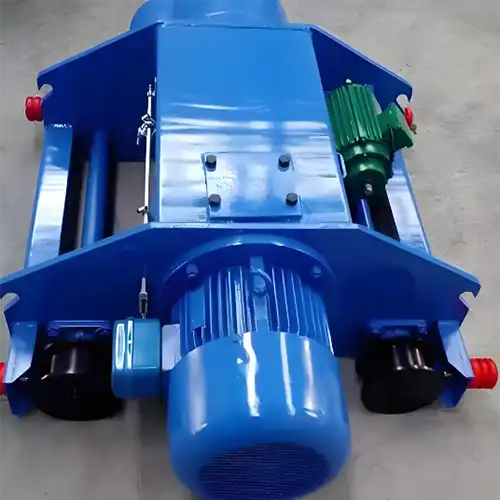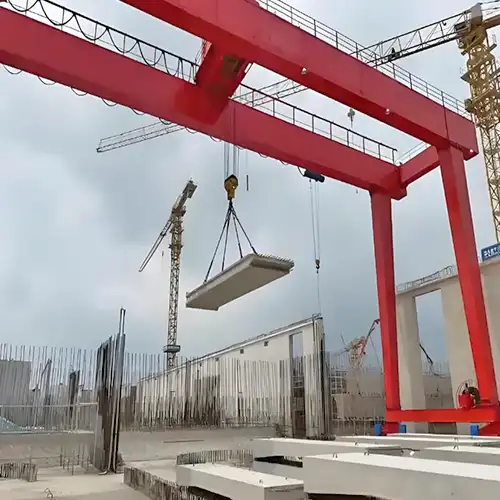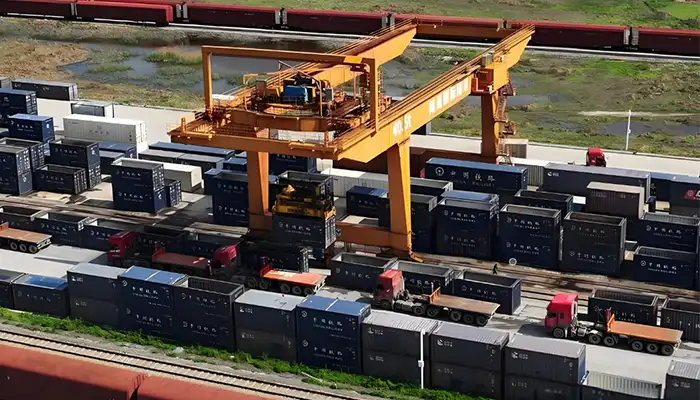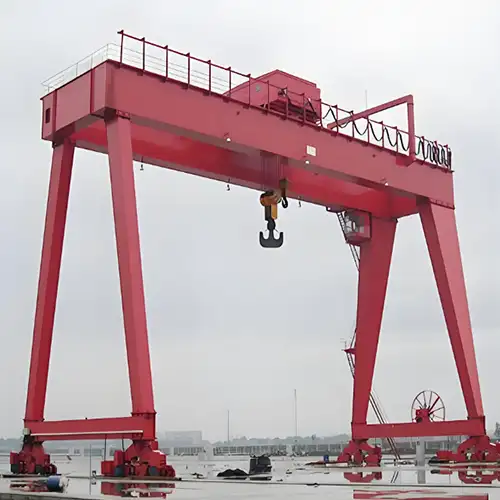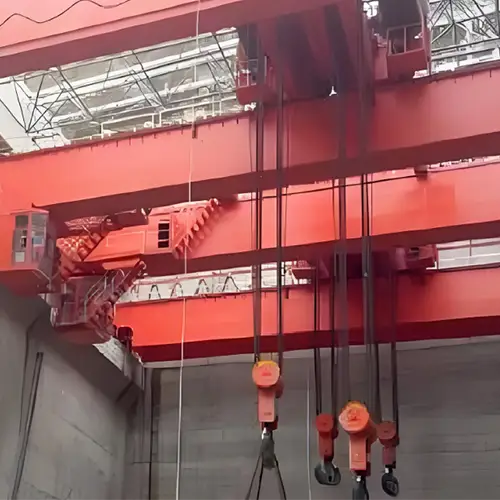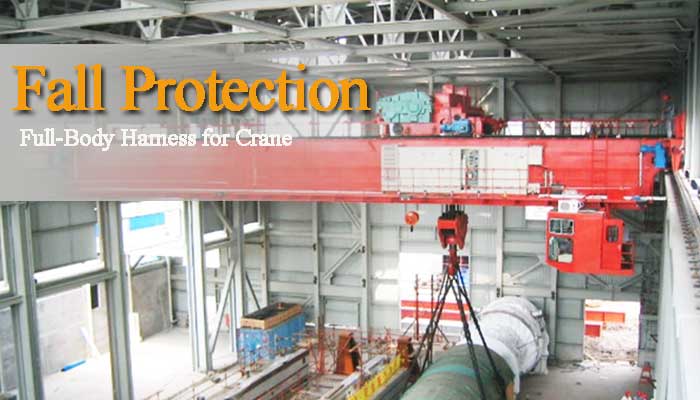
Fall Protection& Full-Body Harness for Industrial Overhead Crane
With accurate remote handling and the ability for an operator to keep a safe distance while directing the equipment, industrial overhead cranes utilized within facilities to transfer large, heavy, and bulky cargo offer a range of safety benefits to operations. Most cranes are used to move a load from one location to another side to side, backwards, and forwards while the operator remains at ground level. Inspection and maintenance of cranes, on the other hand, require employees working at a height.
Even if access to the crane components is provided by a mobile scissor lift, aerial work platform, or crane walkway, fall protection must always be required when working at heights. A physical platform can be used to access equipment in specific instances, such as the manufacturing and assembly of particularly large or tall gear, or the requirement to undertake maintenance on a huge piece of equipment. In these situations, a fall prevention system must be used to ensure that this type of operation is done safely.
A fall arrest system is the most often utilized fall protection system for operators operating in and around cranes at heights. The operator wears a harness that is attached to a self-retracting lanyard that is attached to an overhead anchor point. If an operator loses their balance and falls, the system reacts quickly to stop them and suspend them in mid-air.
When employed in the same places as above cranes, a choice must be taken about where the anchor point, or many anchor points, should be placed. A variety of solutions may be used depending on the operation, the type of overhead crane used, and the job that needs to be done.
OSHA standard for fall protection systems criteria and practices states:
1926.502(d)(15) Personal fall arrest equipment attachment anchorages must be independent of any anchorage used to support or suspend platforms and capable of sustaining at least 5,000 pounds (22.2 kN) per employee attached, or they must be designed, installed, and operated as follows:
1926.502(d)(15)(i) when used as part of a comprehensive personal fall arrest system with at least a two-factor safety factor; and 1926.502(d)(15)(ii) when used under the supervision of a trained person.
Some systems use a permanent anchor point on the crane that can support the 5,000-pound OSHA requirement; others use a second fall arrest system installed along the runways or bridge as a separate anchor point, letting the employee to roam around freely. The crane must be locked-out/tagged-out in these scenarios to prevent it from moving while the employee is working on it. When the crane is halted and shut out, other safety measures can be folded in and out of the operational area as needed.
A secondary support system for lanyard attachment points can be built above the crane's bridge and girders in applications where both the operator and the crane must be able to move. In this instance, mechanisms such as zone limitations or physical crane stops should be placed to prevent the crane from colliding with the fall prevention system.
- The following are some of the best practices for keeping personnel safe when working at heights:
- Use a fall protection system at all times.
- In addition to the worker at height, assign a second employee to monitor the region from the ground. While the operator overhead concentrates on the task at hand, this individual keeps an eye out for potential disturbance. Others approaching the area where the overhead work is being done are likewise warned by the floor-based employee. They can also provide fast help to the worker at height if the safety system is activated, as being suspended by a harness for an extended period of time can cause injury.
- Protecting pedestrians from falling tools, components, or other items that aren't secured overhead by cordoning off the entire work area at ground level.
- Before executing the service work, lock out/tag out the overhead crane according to OSHA requirements.
Do's And Don'ts Of Full-Body Harness Inspection
A full-body harness goes a long way toward protecting workers from work-related accidents. Workplace injuries have the greatest impact on productivity and force management to incur considerable unproductive costs in compensating injured employees. As a result, full-body harnesses are in high demand in workplaces where there is a high risk of injury. However, you must take proper care of these items to ensure that they remain in excellent working order and provide complete protection to the employees. This is why it is unavoidable to conduct regular inspections. In that regard, here's your guidance.
The inspection program should have a good mix of physical and visual inspections.
In terms of harness inspection, it consists of both a visual and a physical check. Visual inspection, as the name implies, is concerned with inspection techniques that rely on eyesight. The biggest issues and flaws will be readily apparent using this method.
But how will you deal with the more nuanced issues? How will you spot the scams that aren't visible to the naked eye? In such cases, you will need to do a manual inspection.
Touch-based evaluation approaches are fully reliant on this method. The inspector will physically evaluate the harness to look for any flaws. The inspection schedule must include the correct balance of touch and visual inspection procedures, according to the OHAS inspection criteria. It ensures that you don't overlook any important details. In this method, the inspection's quality is improved.
What are the major aspects that the visual inspection covers?
The scopes of visual inspection comprise the following points:
- Examine the area for tears, nicks, and wounds.
- If there are any broken or cracked fibres, investigate them.
- The degree to which things have deteriorated
- Modifications done by the user
- Fraying and Abrasions
- If the fabric has become discolored,
- Spots that are bright or hard to the touch
The visual check will cover areas such as webbing thickness, missing straps, and uninvited stretching, in addition to the issues mentioned above. It'll also search for burnt or melted fibers. Most significantly, the inspection team will search for excessively high brittleness and hardness during this stage of the inspection procedure.
The harness's uneven webbing thickness indicates that it may have fallen. Thermal damage is indicated by hard and glossy areas. Excessive brittleness and hardness, on the other hand, increase the risk of heat or UV damage to the harness.
Stitching covers a major aspect of the inspection process
This process includes both visual and physical inspection methods. The following are the main factors to consider in this regard:
- Are there any stitches that have been pulled?
- If there are any ripped stitches, the inspection crew will extensively inspect them.
- Missed stitches are being searched for.
- Are there any hard or gleaming areas? It implies that the harness has been damaged by heat.
- Is there any stitching that is discolored? This injury can be caused by a variety of circumstances.
What are the major points about inspecting the hardware?
- The hardware should also be given careful consideration during the examination procedure. Here are some crucial aspects to consider:
- Twists, bends, and distortions are all examples of twists, bends, and distortions.
- Look for distorted/broken grommets if the harness has been corroded or rusted.
- If the user has made significant changes to the harness, the inspection process should include a check to see if the bars are up front and if all of the springs are in good working order.
- Furthermore, examine for fractures and breaks, as well as the appearance of sharp and rough edges, during this phase.
You can keep the harness in great working order if these measures are followed.
- During the inspection process, the tagging system must be given sufficient attention.
- The tagging system must receive enough attention during the inspection procedure. All harnesses should, in theory, include clear marking that identifies the harness. Information such as the manufacturing date, model, manufacturer's description, cautions, and limits should be included on the tag.
- The inspector must verify the tagging for the production date, and if the harness has exceeded its projected lifetime, it should be discarded. It is preferable to quit using the harness if the tagging is not appropriate.
- The cleaning and storage procedures must be checked during the inspection process.
- The harness is kept in the best hygienic condition by adequate and regular cleaning. It will remove the spots and stains before they cause any fabric harm. The truth is that proper and timely cleaning is critical for extending the harness's lifespan.
The harness bears the brunt of the losses as a result of poor storage practices. As a result, the inspection process must also pay close attention to this topic. If there are any drawbacks discovered in this area, the inspector must recommend appropriate storage solutions. It will go a long way toward extending the harness's lifespan. To undertake inspection tasks, it is always preferable to use a specialized inspection firm. It will bring the most experience and talents to bear on the inspection process in order to achieve the best possible results. However, it is critical that you work with the most dependable and trustworthy partners possible.

